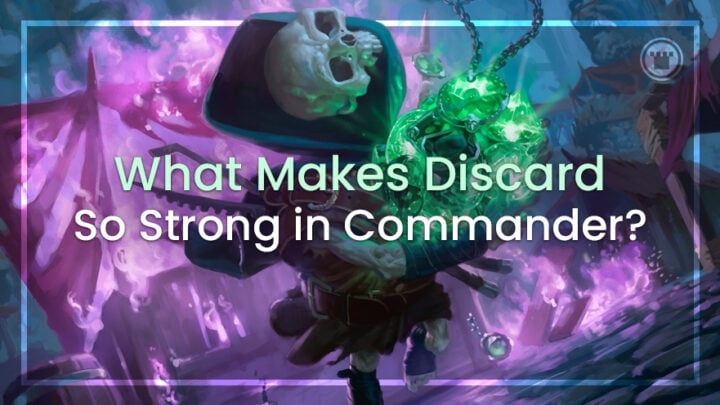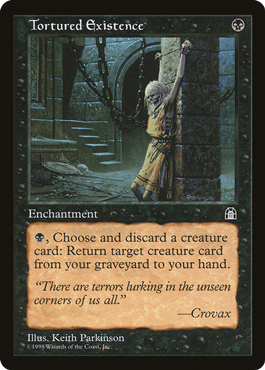Magic has been around for long enough to spin off hundreds of unique mechanics, each with its own unique advantages, dedicated support cards and memorable payoffs. But when you throw them all together in the grand melting pot that is Commander, a few mechanics clearly stand out from the pack. They offer versatile deck building options, consistent performance in different areas of the game and power ceilings which border on unbeatable. Today we’re talking about the Discard mechanic in Commander.
One thing all the other top-tier strategies we’ve looked at have in common is they focus on the rapid development of on-board resources. Cascade can turn one spell into several, while Flicker and Proliferate are able to multiply the value of cards already in play with very mana-efficient actions.
Even Sacrifice decks rely on strong resource acceleration. Many of the best sacrifice outlets are just ways to exchange tokens for mana or cards, and you need to get considerable fodder in play to even set those up.
Maximizing your resource growth is a reliable way to succeed in multiplayer Magic, but it’s not the only way. Discard often eschews traditional board development entirely, which is exactly why we’re looking at it today!
MAJOR LEAGUE PITCHING
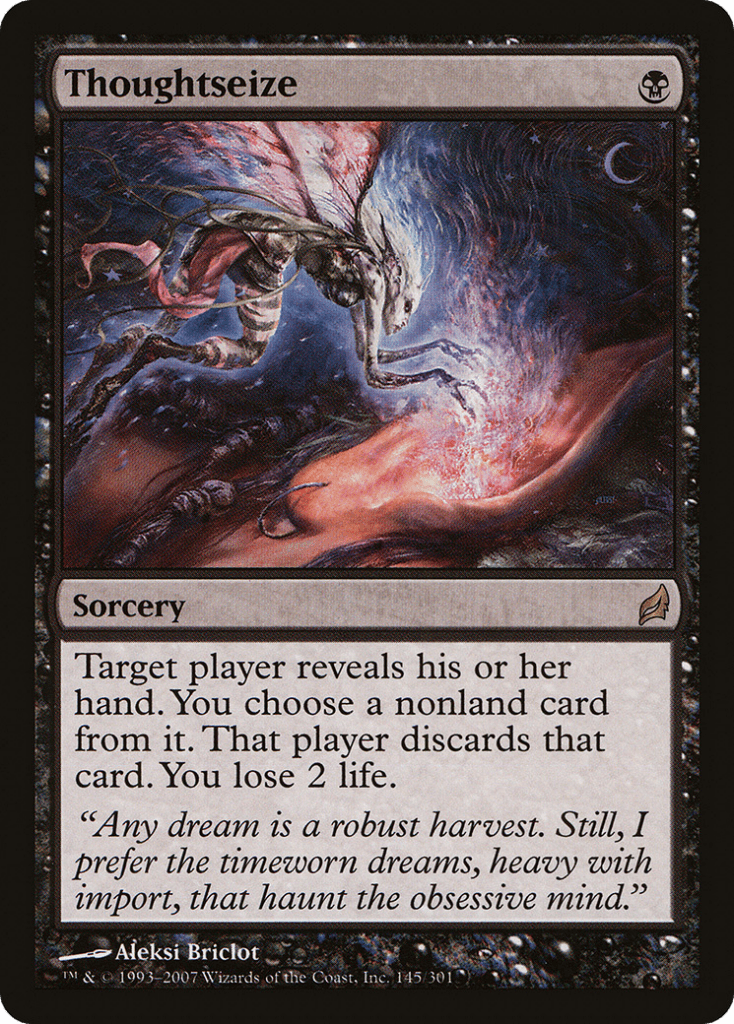
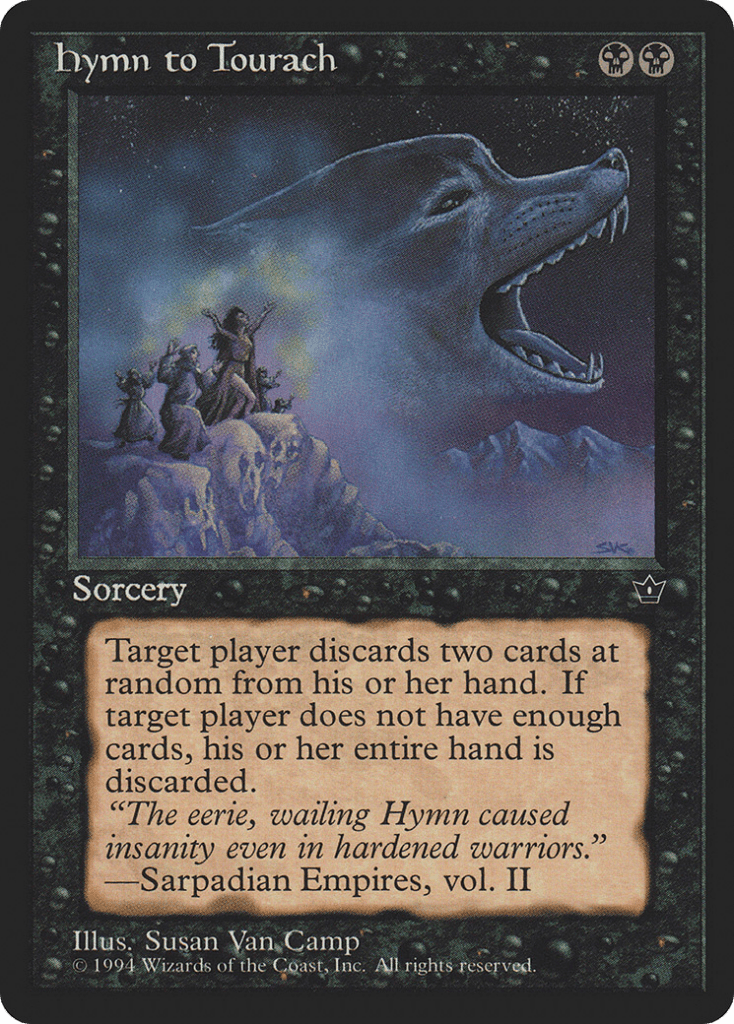
Let me clarify something: by “discard deck” I don’t mean one that plays a lot of Thoughtseize and Hymn to Tourach type spells — at least as the main focus. We’re still building for efficiency in a multiplayer environment, and targeted hand disruption is automatically 66% less efficient when you have three opponents compared to one.
The gameplay reality is even worse. A Thoughtseize or Duress asks you to spend resources to avert a play your opponent hasn’t committed anything to (other than a card draw). At least a counterspell might trade up on mana and also neuter that opponent’s turn.
So in a Commander context, I see “discard” as the best way to describe a swathe of interdependent synergistic mechanics, mostly based in black, which look for advantage by quickly pitching their own hand to the graveyard. Just calling the archetype “dredge” or “madness” would be too narrow, “graveyard deck” too broad… so “discard” it is.
So, why would you be actively trying to discard cards from your hand instead of playing them? There are quite a few possibilities:


You could be discarding cards to their own abilities.


Discarding to pay for abilities of cards you already have in play.
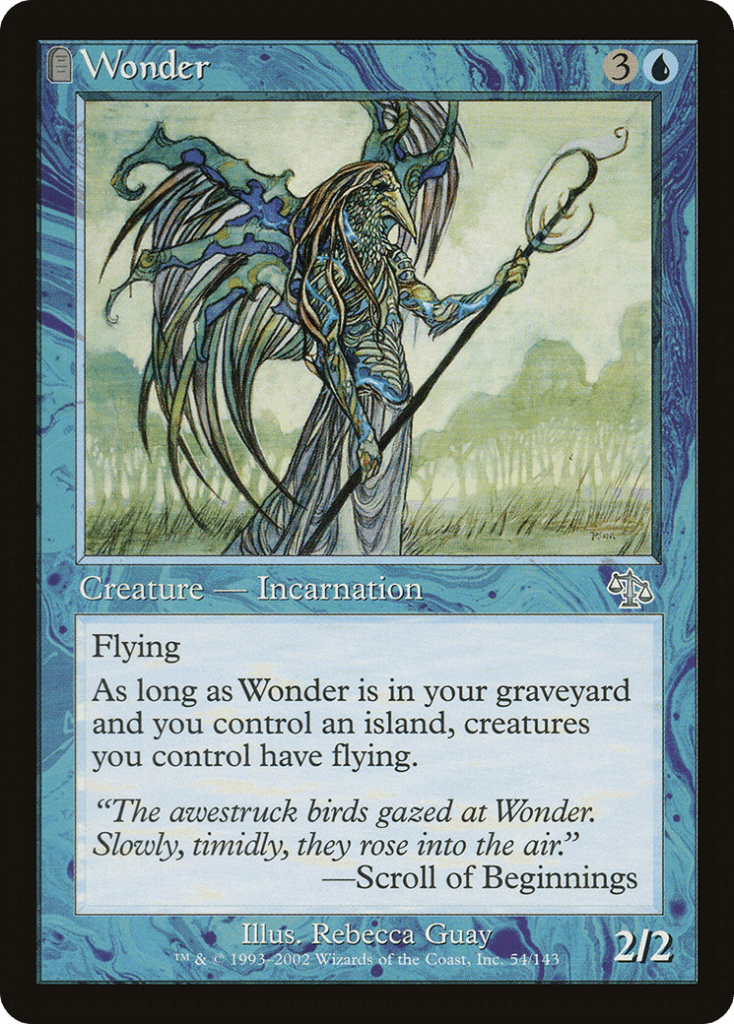

Discarding cards that are helpful to have in the graveyard.


Discarding cards to efficiently draw new ones.

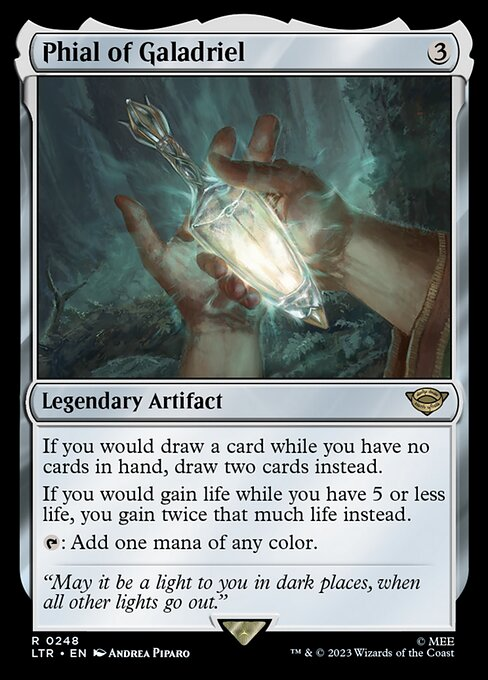
Or discarding to enable Hellbent-style mechanics.
Unlike some other archetypes, discard decks can freely combine any of these sub-themes and the cards will almost always synergize, allowing for very powerful combinations and plenty of choice about the specific direction you take your list. Some of that is just good fortune in how all these effects are worded, but I’d say it’s more that discarding is an inherently effective way to interface with Magic’s core mechanics.
THE DARK ART OF OPTIMAL RESOURCE EFFICIENCY
The fundamental logic for building around discard effects is similar to that of sacrifice — you take something normally considered a drawback by the designers and then try to flip into either a neutral or even positive exchange.
The big difference here is you don’t control any permanents to produce mana or sacrifice at the start of a game, whereas the rules let you start with a full grip of seven cards ready to be “spent” immediately — plus another free one each turn!


This means discard decks can access very powerful plays right from turn one. But focusing on discard costs also allows for better use of your resources throughout the game.
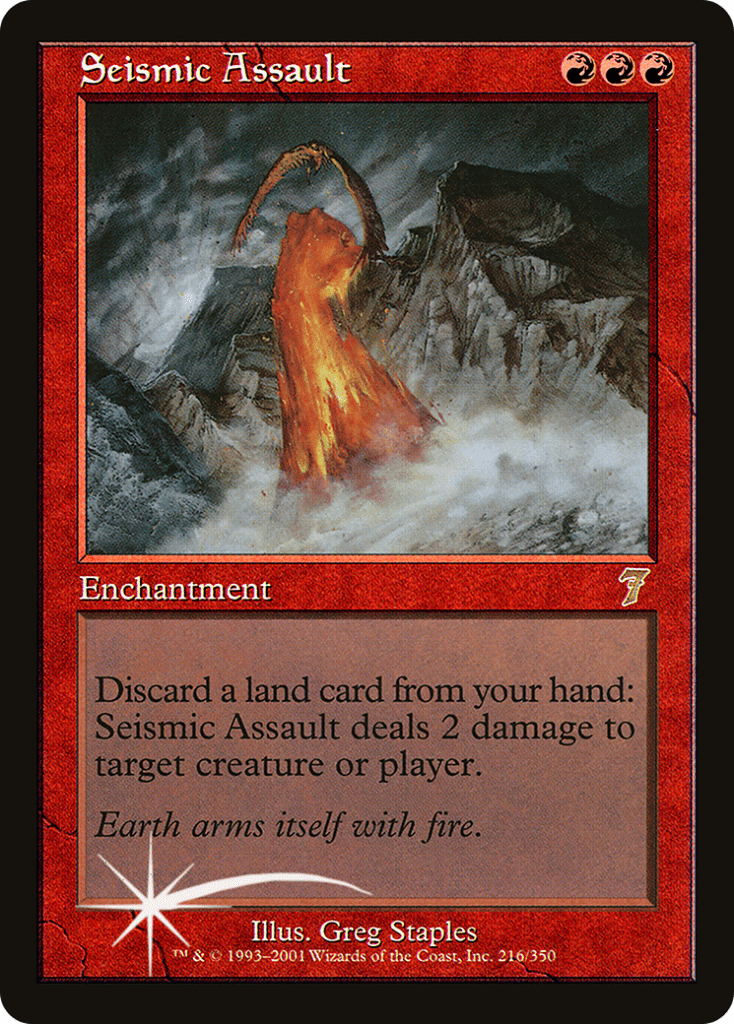
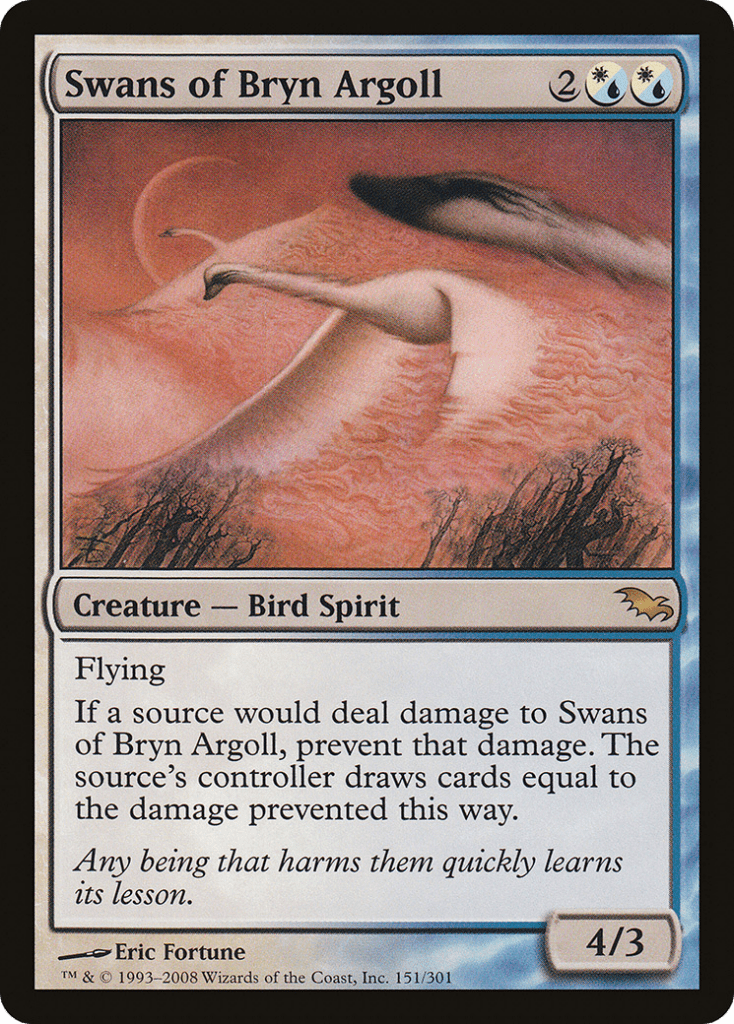
Mana income from permanents in play is very reliable and can be accelerated quite easily in Commander, but it is still ultimately capped by how many untap steps you see. In order to increase your mana production (or permanent production, for sacrifice decks) and pay for more spells, you must also pay to draw more cards that have those effects. But since many discard costs have little or no associated mana cost, a deck that pays for things via discard gets to cut out half of those steps.
So long as you can efficiently draw into new cards to replace the ones you pitch, there’s no built-in limitation on how far your train of action can carry you. And that’s before you even start to consider how efficient it can be to get value out of the cards being discarded.
METHOD TO THE MADNESS
Just as a well-built sacrifice deck will include cards that trigger when creatures die to improve their resource returns, discard decks have multiple ways to leverage the thing they already want to do. Madness is the most narrow and specialized option, allowing you to tack discounted spells onto any instance of discard.


This also means every madness spell essentially has flash, since casting it this way ignores the usual timing restrictions for the card type. The downside is you’re limited to cards that actually have the printed madness ability, with only a few ways to apply that ability to other cards.
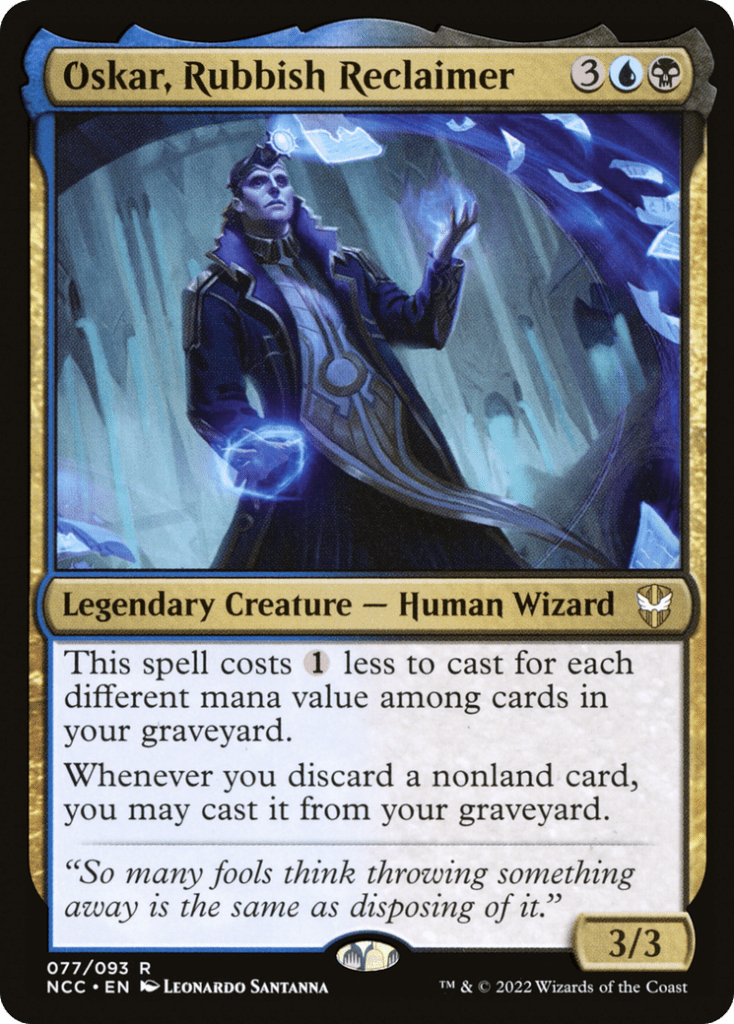
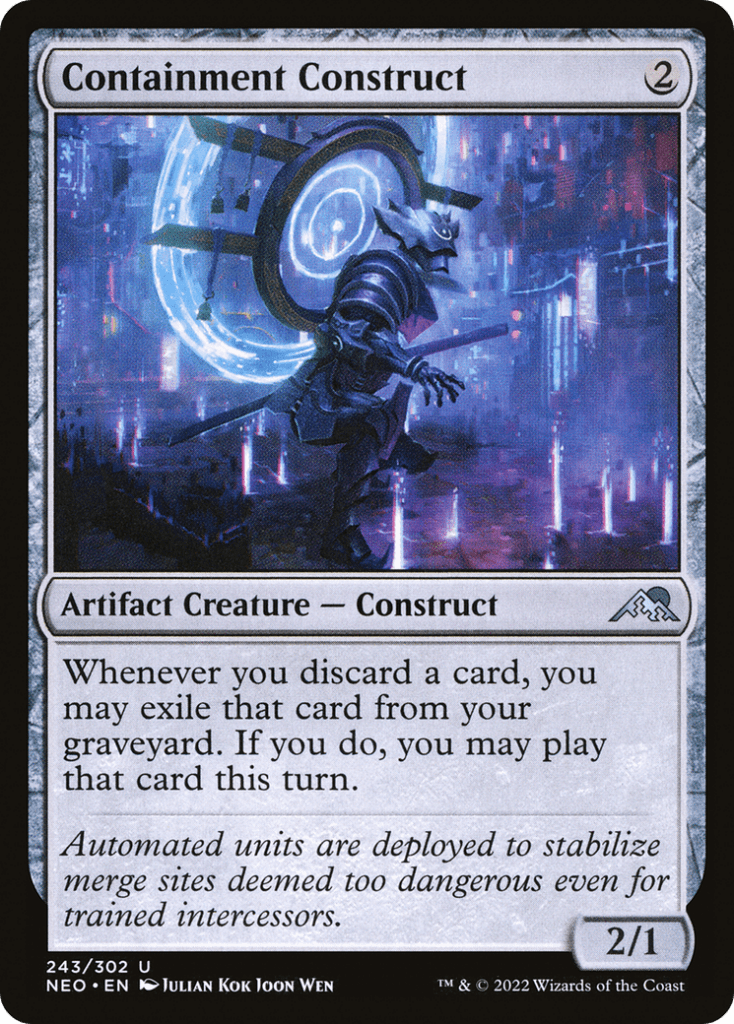
Falkenrath Gorger gives any vampire card the madness text, while Conspiracy Theorist, Containment Construct and Oskar, Rubbish Reclaimer work for any card (though Theorist and Construct do not let you break timing rules the way true madness does).
They’re all still very valuable inclusions for this deck, and I prefer any of them to an effect like Bag of Holding since they actually allow discarded cards to hit your graveyard, which ends up being pretty important.
EXPEDITED UNDERTAKINGS
The oldest and arguably best way to maximize your advantage from discarding cards is to make sure you discard something expensive and nasty, then abuse a cheap card like Reanimate to put it directly onto the battlefield much faster than is really fair.
This isn’t news to anyone who’s been playing Magic a while, and the most powerful Reanimator decks in Constructed have always included incidental discard spells like Unmask to help enable their broken first-turn plays. We’re just proposing to flip the script and play some incidental Dread Return, Animate Dead, Stitch Together and Victimize in our discard decks!
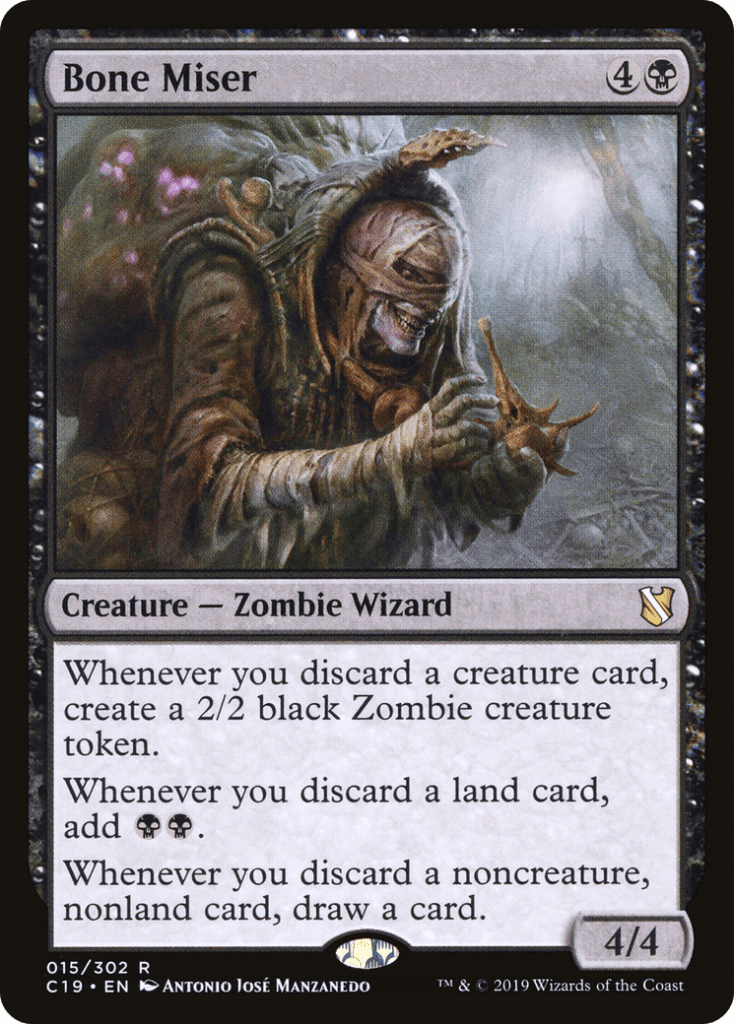

Reanimation (or any other form of recursion you prefer) is great here because it doesn’t explicitly rely on an active discard outlet to be its best. It lets us both shortcut to expensive effects like Bone Miser and Skirge Familiar or rebuild with them after a board wipe, when our other synergies might be temporarily turned off.
Of course, you don’t even need to be playing targeted reanimation spells. Any card with abilities which let you reuse it from the graveyard (encore, escape, flashback, unearth etc.) can make great discard fodder. I’d argue this is the main obstacle to most madness cards seeing play, as the pool of graveyard-playable cards fills a similar role and is both deeper and richer in terms of card quality.
Either way, including this recursive element in your discard deck adds a ton of power for virtually no cost (in deck building or in-game). And compared to an all-in recursion deck like Dredge, hate cards like Rest In Peace are only going to slow you down a little rather than exile your whole gameplan.
OCCAM’S MINDRAZER
It’s true that the most obvious deckbuilding choices are often the best, and I have so far skirted around the really straightforward way to get value out of discarding: cards with “whenever you discard” effects. In part that’s because there’s only about thirty of them in all of Magic, but they are definitely an important (if small) cog in our engine.
The best thing about an effect like Feast of Sanity or Glint-Horn Buccaneer is they broaden our focus from “effects that let us discard for profit” to just “effects that let us discard.” This opens the door wide to generically powerful, consistency-enhancing effects like cycling, looting, windfalls and of course, wheels.


I probably don’t need to explain why discarding cards to draw cards is the best way to take advantage of “whenever you discard” triggers, but I’d argue it’s so good and central to the plan that you should basically consider “whenever you draw” effects to belong in the discard archetype as well.
After all, wheels are the most efficient card draw spell as well as the most efficient way to discard. It’s a truth too powerful to be ignored! ACCEPT HIS WORDS, AND RULE THROUGH THE POWER OF DRAW 7’S!!!
Ahem. So, there are political, financial, moral and even competitive reasons you might not want to go all the way in on wheel effects. There are still lower-power ways to achieve similar results, like combining smaller effects such as Faithless Looting, Careful Study and Frantic Search with Shadow of the Grave or Change of Fortune. You could include a full cycling package, with Fluctuator, New Horizons, and perhaps a different set of wheels.
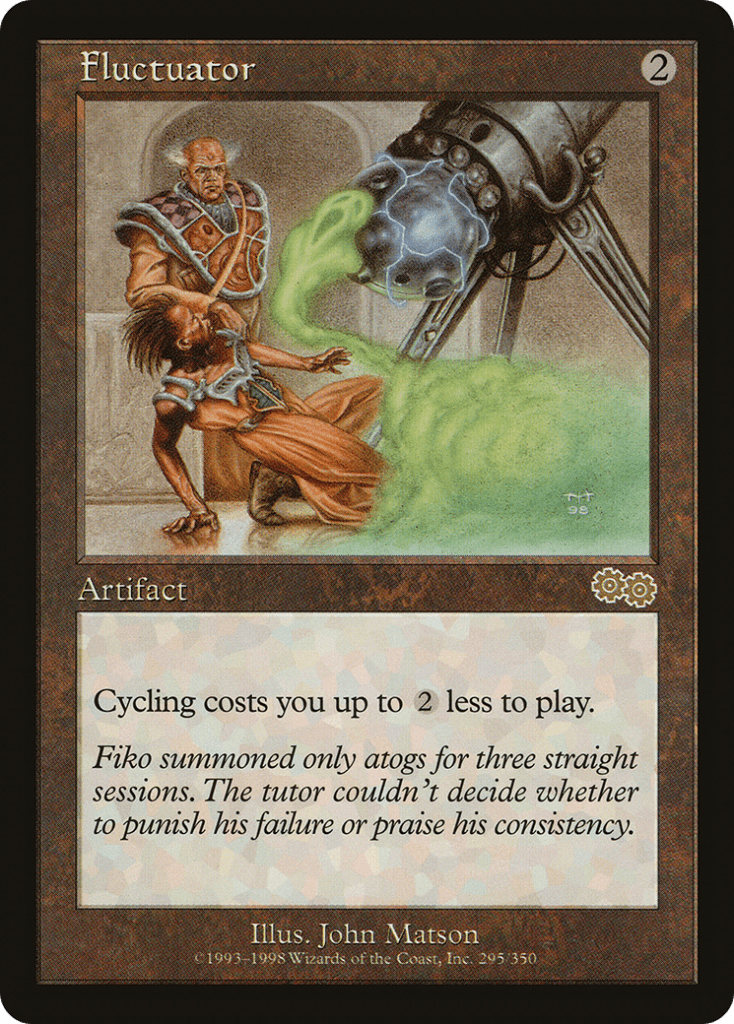

LET US FIGHT EMPTY-HANDED
But perhaps the very idea of drawing cards in a deck like this feels deeply wrong to you — let alone causing your opponents to draw as well! If you only want the hand sizes to go one way, you can still make it work despite what I said at the top of the article. We just need to make sure our hand disruption is hitting all opponents at once.
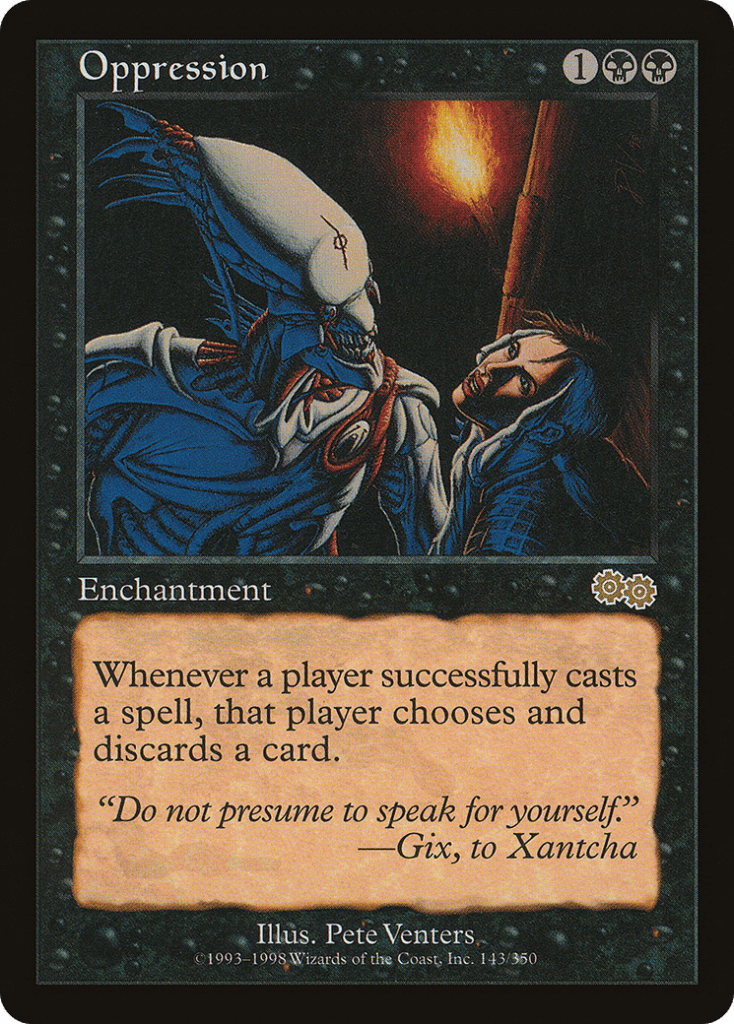
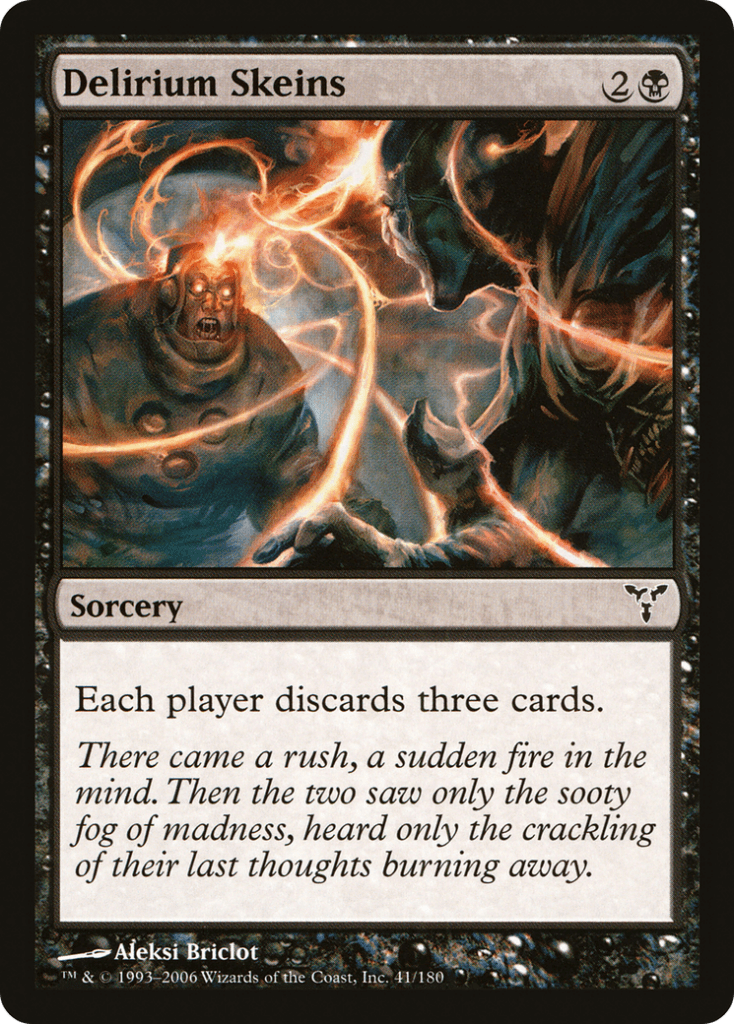
Fortunately, we are already perfectly built to leverage “each player” discard like Delirium Skeins and Mind Rake. We’re just paying cards to make our opponents discard instead of drawing or getting some other kind of value.
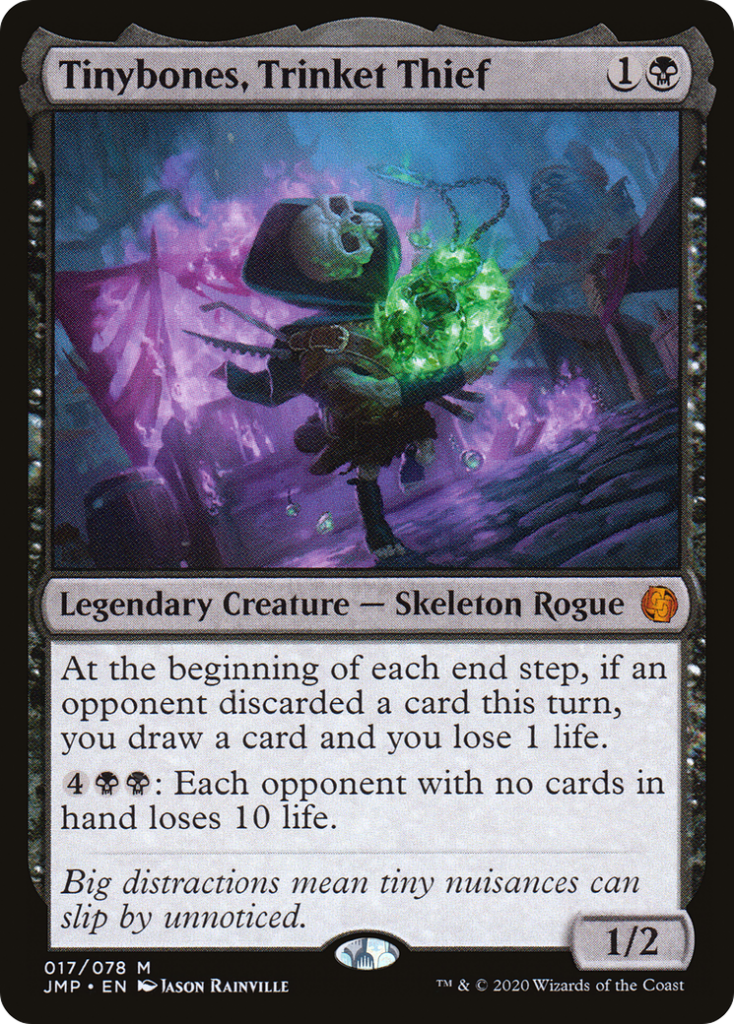

Better still are repeated effects, like Painful Quandary and Oppression, since most Commander decks these days will quickly rebuild their hand after a discard spell or two. Add some much-needed extra value in Tinybones and Tergrid to make sure we’re actually moving toward victory with these discard spells and you have another strong way to build this archetype!
But I’d still caution against this route unless you really know what you and your playgroup enjoy. I’m conceptually a huge fan of “group slug” decks, but denying other players resources as your primary gameplan inevitably goes one of two ways.
Either you don’t do a good enough job and you become borderline irrelevant, unable to keep up with the proactive engines of other decks. Or, you do manage to grind the game to a near-halt and immediately become the de facto arch enemy… in every game you play.
Perhaps you love that kind of adversity, and you know your playgroup runs very resource-efficient decks with varied answers for permanents that are unlikely to be completely stalled by a turn-two Sire of Insanity.
But I think Tergrid’s rapid rise to infamy shows that the majority of casual Commander players are just not too excited about taking that challenge on. That’s why I stressed the many other themes you can build into a discard deck before getting to this one.
BUT WHAT ABOUT ‘DAT CARD?
I could probably go a lot further in breaking down such a flexible archetype, one which can tie into so many other powerful mechanics. You’ll notice I haven’t stopped to list many actual discard outlets you could play, or even the usual commander suggestions.
In the case of the former, it’s because the best choices vary not only by color identity, but often by specific deck building limitations: Seismic Assault and many other red effects want you to play an extra-high land count, while a black deck with reanimation and Tortured Existence obviously cares about discarding creatures.
As for the commanders, here’s a few not mentioned yet. Generally you want to make sure you have a two or three-color identity for a theme like this, and remember that the majority of your good enablers will be in Grixis colors:
- Brallin, Skyshark Rider plus Shabraz, the Skyshark
- Raffine, Scheming Seer
- Chainer, Nightmare Adept
- Rielle, the Everwise
- Soul of Windgrace
- Amber Gristle O’Maul plus Agent of the Shadow Thieves (or Criminal Past)
- Slogurk, the Overslime
Despite their contrarian approach to the Commander metagame, discard decks are capable of some truly disgusting lines and offer a huge range for individual expression. Drawing cards, playing effects for no mana and utilizing the graveyard might just be the three most powerful things to do in Magic, and by choosing this archetype you can finally unite all three into one harmonious engine.

Tom’s fate was sealed in 7th grade when his friend lent him a pile of commons to play Magic. He quickly picked up Boros and Orzhov decks in Ravnica block and has remained a staunch white magician ever since. A fan of all Constructed formats, he enjoys studying the history of the tournament meta. He specializes in midrange decks, especially Death & Taxes and Martyr Proc. One day, he swears he will win an MCQ with Evershrike. Ask him how at @AWanderingBard, or watch him stream Magic at twitch.tv/TheWanderingBard.

